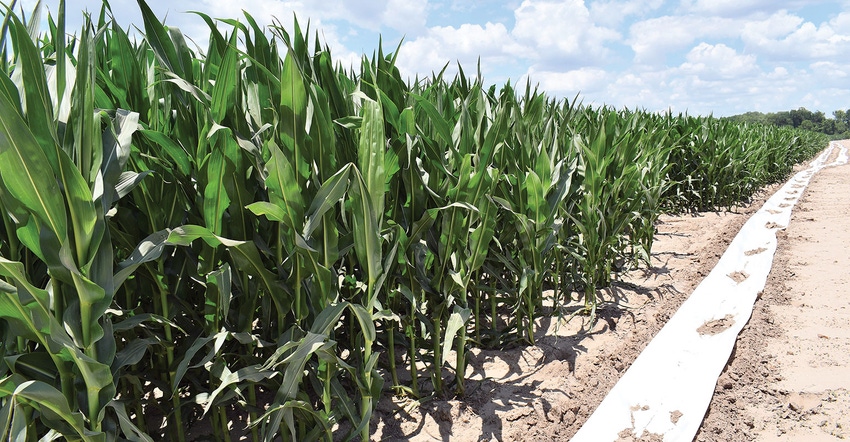
Since the majority of the Mississippi Delta is furrow irrigated, there are three tools to increase efficiency with furrow irrigation, which are computerized hole selection, surge irrigation, and soil moisture sensors.
Drew Gholson, irrigation specialist at the new National Center for Alluvial Aquifer Research (NCAAR) and Delta Research and Extension Center in Stoneville, Miss., discussed these different tools as well as other ways to improve irrigation systems during the wintertime.
"Utilizing tools like computerized hole selection, surge irrigation, and soil moisture sensors, whether it's adopting these as new tools or just management, helps with preparation for the next irrigation season," Gholson said. "The winter is a good time to incorporate these tools – especially for those that have not adopted computerized hole selection, which is the foundation for furrow irrigation efficiency."
Pipe Planner, computerized hole selection
Computerized hole selection is another useful program, which helps farmers select what hole size is needed when using poly pipe for furrow irrigation. It reduces the amount of runoff and increases water use efficiency.
Pipe Planner is a user-friendly program, which helps to achieve uniform water application for row crops, and a season of downtime is a good period to get your flow rate set up.
"If you already have your flow rate, use the office time you have to put in your flow rate as well as your elevation," Gholson said. "Then you can start making your plan. After obtaining those two things, the rest is mainly computer work by inputting the information into the program and then working through the program to make sure every field has a Pipe Planner plan. This way you're ready to go when you start laying pipe for irrigation next year."
To learn more about Pipe Planner check out this link: http://www.pipeplanner.com/.
"I am happy to help set up these programs as well as are our county Extension offices," he said. "We get a lot of calls when farmers are laying pipe and want to set up a computerized hole selection program, but by getting that done over the winter months, we are all one step ahead for later in the year.
"You're going to save a lot of water, time, and money using these programs."
Soil moisture sensors
Another tool to prepare before planting season begins is soil moisture sensors.
"This is a great time to gather information about which soil moisture sensor you might want to use and get familiar with the program," Gholson said. "This year, we set up a soil moisture sensor showcase, which is an online program showcasing the different telemetry services available on the market.
"When I'm talking about soil moisture sensors to farmers, one of the first questions I get is 'What type of sensor, or what type of service should I use?' What I want to do with them is sit down and go through all the different telemetry options available because all farms are unique and might require something different."
Each program operates differently, giving different graphs and information in unique formats.
"The Soil Moisture Monitoring Showcase was set up through working with different companies on how they install their soil moisture sensors," Gholson said. "We don't have all of the moisture sensors on the market in the showcase, but we do have many options for them to look through. We also have sensors set up at our site to where we have side-by-side comparisons."
Additionally, through the Soil Moisture Monitoring Showcase, users can select different brand information. For instance, if you want to know more about the PrecisionKing sensor, you can try out their service for free to view the layout of the program.
"This allows farmers to view the different dashboards and get a feel for the system to see if it might be something that will work on their operation," he said.
The Soil Moisture Monitoring Showcase can be found by using this link: https://bit.ly/soil-moisture-monitoring. Currently, the data on the soil moisture sensors is from last year, and they plan to continue the showcase in 2021.
Conservation practices to conserve water
Wintertime is a good time to consider and plan for future conservation practices such as incorporating an on-farm water storage system.
"Once things get going in the middle of the growing season, adopting new conservation practices is not going to be at the top of your to-do list," Gholson said. "It is a hard time to make a conscious plan for any type of conservation practice or irrigation water management practice, so I encourage farmers to see what tools are out there and how to implement them into the operation. Now is a good time for that."
If you are interested in learning more about irrigation tools or conservation practices, contact Drew Gholson or an Extension service agent for more information and guidance.
About the Author(s)
You May Also Like




